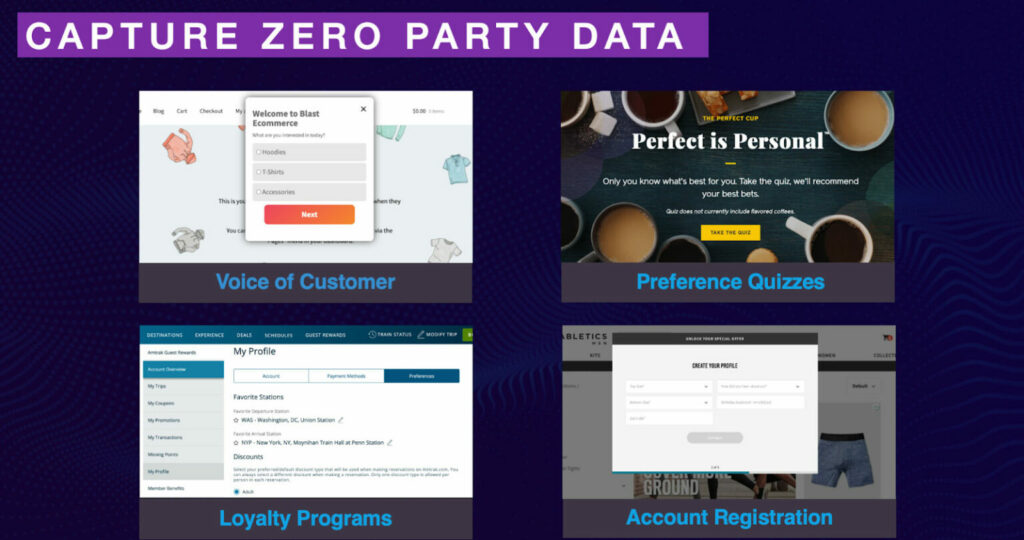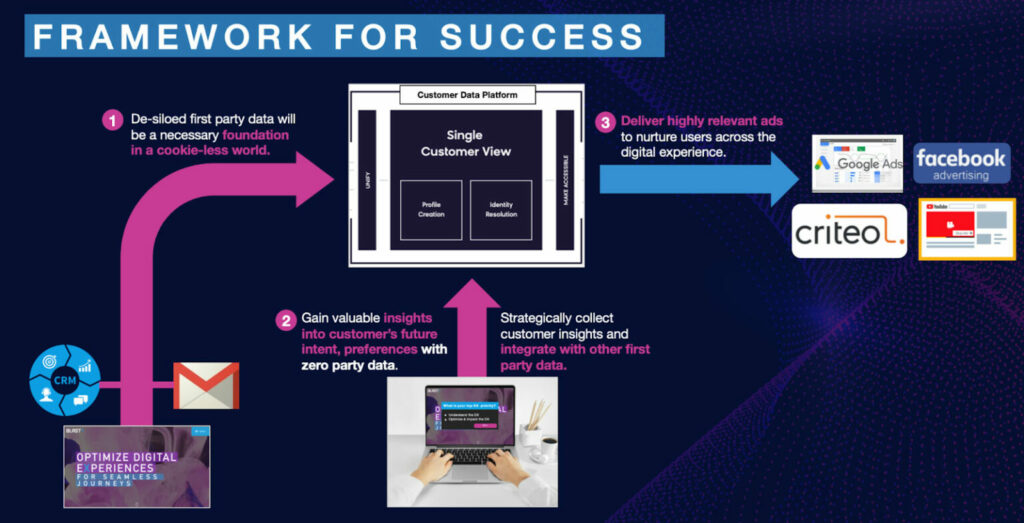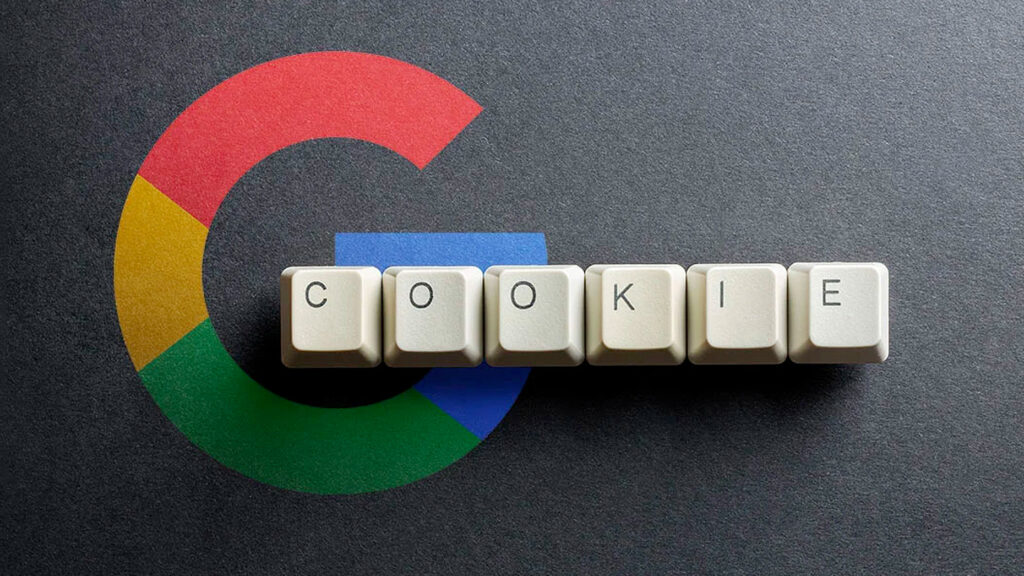The marketing landscape is constantly changing even as we head towards a cookie-less world. A good example of this is Google’s decision to delay its third-party cookie ban. Ultimately, this leads to greater uncertainty as teams and technologies work hard to create potential workarounds for the third-party cookie loss, which now will have to wait until 2023 to be tested in the real world. Yet, consumer demand for a personalized digital experience will continue to remain high while brands figure out the next steps.
Given this uncertainty, how should your team prepare for the future cookie-less world while maintaining a competitive advantage? We see the answer as two-fold:
- Prioritize your first-party data collection
- Expand and utilize other types of high-quality data
Embrace Your First-Party Data
Plenty has been written recently about the need for brands to transition towards a first-party data strategy. If your team is not already taking steps to create this new foundation, you’ll want to ensure you leave enough time to prepare, strategize and execute, even with Google delaying the third-party cookie ban.
With the spotlight turning to first-party data, it’s increasingly important to ensure your team has the appropriate technology in place to gain the most value from your data. A customer data platform (CDP) is viewed as a key investment that will de-silo first-party data, give you a unified view of your customers, and serve as a central hub for future marketing efforts.
A CDP is viewed as a key investment that will de-silo first-party data and give you a unified view of your customers.
It’s important to mention that going forward with a first-party data strategy doesn’t preclude your team from incorporating other proposed workarounds. In fact, once you’re able to judge the effectiveness of those other solutions after third-party cookies go away, those solutions can be layered on top of your existing first-party data foundation to enhance your marketing efforts further.
Gain the Competitive Advantage with Zero-Party Data

Over the next couple years, there’s a real opportunity for brands to build on their first-party data foundation. But why is this necessary if our first-party data will provide us with high-quality customer data?
First-party data is valuable in telling you about what happened with a particular customer, for example, what was the last product they viewed or their last purchase. However, first-party data doesn’t shed light on current and future intentions. While establishing a first-party foundation is vital as we head towards a cookie-less future, we expect the key to maintaining the competitive advantage will actually lie in data that lets brands know what customers are doing now and are going to do in the future.
Zero-party data is that data. As defined by Forrester, “Zero-party data is that which a customer intentionally and proactively shares with a brand. It can include preference center data, purchase intentions, personal context, and how the individual wants the brand to recognize [them].” Using zero-party data helps you eliminate the guessing game of what each customer wants and increases the likelihood of delivering a relevant experience. Imagine having the ability to serve marketing content based on what your customer actually told you they wanted!
Using zero-party data helps you eliminate the guessing game of what each customer wants and increases the likelihood of delivering a relevant experience.
Brands can engage in zero-party data collection in a variety of ways, some of which are highlighted below.

To be successful with zero-party data in the short and long-term, you must provide value in exchange for customers volunteering this information, such as offering a discount, exclusive content, loyalty points, or personalized recommendations/experience.
Bringing this all together, we expect that brands who master layering in zero-party data on top of their first-party data foundation will be in the best position to deliver highly relevant content across the digital experience that meets customers’ expectations. It’s also worth mentioning that for brands who are increasingly concerned about measuring business outcomes tied to their marketing efforts, you can’t start with higher quality data than your customer’s first-party and zero-party data driving your marketing campaigns.
Brands who master layering in zero-party data on top of their first-party data foundation will be in the best position to deliver highly relevant content across the digital experience that meets customers’ expectations.
Start Your First-Party Data Strategy with a Framework
One of the main pain points for brands in navigating the future marketing landscape is simply taking action to be prepared. Executing on a first-party data strategy and zero-party data approach can be easier said than done. This is partly because you need to understand what technology needs to be part of your MarTech stack. In addition, you need the expertise in place to know how to strategize and execute using such technology.

For those interested in pursuing a first-party data strategy incorporating zero-party data, here’s a framework to get started:
Again, a CDP, like Tealium AudienceStream, is an essential technology needed to execute this approach as it will enable your team to layer your zero-party data on top of your de-siloed first-party data.
Get the Most Value Out of Your MarTech Investment
Some may claim that additional investments in technology, beyond investing in a CDP, are required to execute a first-party data strategy teamed with zero-party data. For example, some may believe that it’s necessary to invest in a separate Voice of Customer (VoC) tool to enable zero-party data collection. If you already have a VoC tool in place, then that’s excellent news as it can be used immediately to capture zero-party data. However, you’ll still likely need to strategize about integrating this tool with your CDP to unify the data if that’s not already done.
If you don’t already have a VoC tool as part of your MarTech stack, there is no need to worry. It’s entirely possible to execute this approach leveraging your tag manager and a CDP. Ultimately, to successfully execute a first party and zero party strategy, the key is to partner with a data expert who knows how to get the most out of your MarTech stack instead of pressuring you to invest in additional technology before you can see the ROI.

